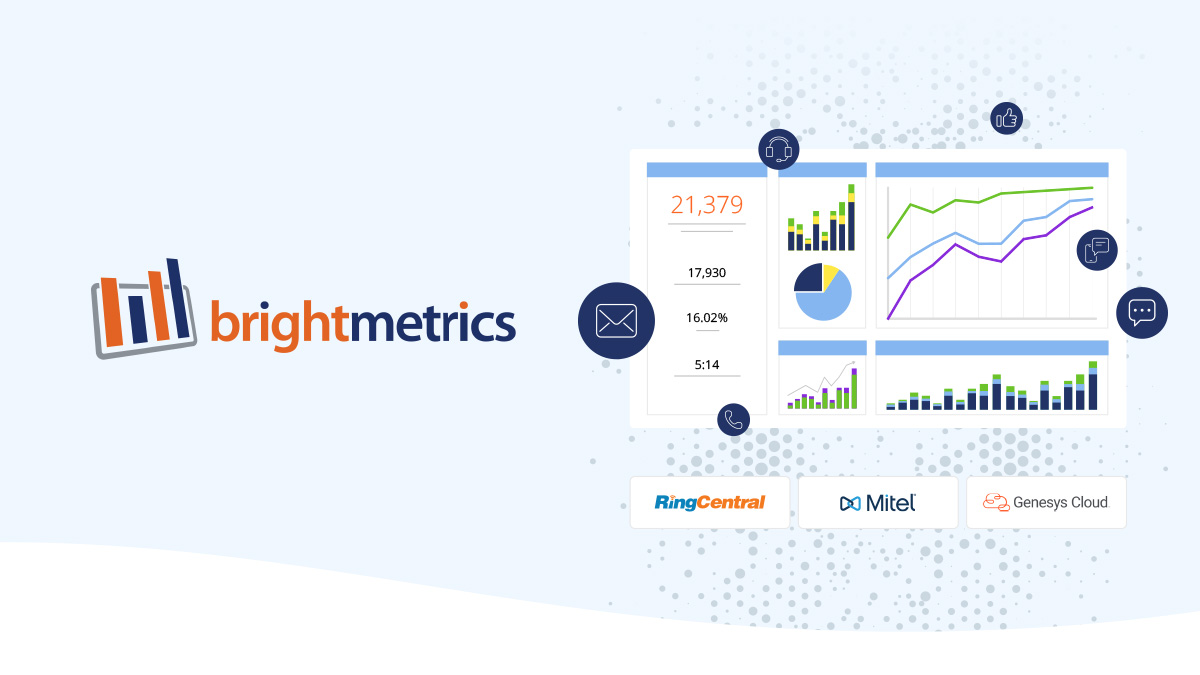Contact center operations managers frequently deal with the challenges that arise when their teams rely on basic spreadsheet software to present and analyze key performance indicators (KPIs). This often entails time-consuming tasks like cell formatting, formula creation, and data management to improve the comprehensibility of KPI reporting within your contact center or call center. It’s not uncommon for team members to find software like Excel somewhat intricate to navigate, requiring manager intervention for the heavy lifting.
Fortunately, there are more effective approaches to assessing and dissecting KPIs. Encouraging leadership teams to invest in more robust tools can unlock the potential for your organization’s contact center to make informed decisions while simultaneously freeing up time and resources for your team. In this article, we discuss the challenges and opportunities for contact center KPI reporting.
Why Basic Reporting Tools Are Problematic for Contact Center Operations
Traditional spreadsheet software, including but not limited to Excel and Google Sheets, is not the optimal solution to conduct KPI reporting. Some of the key factors being:
1. Manual Data Entry and Unstructured Data
Basic reporting tools not only demand manual data entry and updates, which are time-consuming and error-prone, but they also struggle with unstructured data analysis, often failing to recognize key customer insights. This dual challenge forces analysts to invest substantial efforts in data maintenance and validation, diverting their focus from more strategic tasks.
In a time where 80-90% of the data generated and accumulated by organizations is unstructured, relying on basic spreadsheet software falls short in effectively executing analysis and business intelligence on this data.
2. Not Scalable
Basic reporting tools often lack the scalability required to handle the massive volumes of data generated by contact centers and call centers. As centers grow, these tools struggle to keep up, resulting in performance issues and bottlenecks.
3. Limited Customization and Granularity
Basic reporting tools typically constrain customization options, rendering it challenging for teams to fine-tune reports to align with the unique requirements of their contact center. These tools yield generic, less insightful reports. In addition, their data visualizations are rudimentary, offering only a limited view of select contact center trends and patterns, lacking the granularity and interactivity provided by advanced analytical solutions.
Although leadership teams may suggest using tools like Excel or similar, to get more in-depth analytics, you’ll likely find yourself restricted in your ability to achieve the desired level of customization and granularity.
4. Security and Compliance Concerns
Many basic reporting tools lack robust security features and compliance measures. Given the sensitive nature of contact center data, IT teams must invest extra resources to ensure data privacy and compliance, which can be challenging with these tools.
Are BI Tools the Answer?
Recent years have offered an array of advanced tools for enhancing KPI reporting. Business intelligence (BI) platforms have emerged as robust solutions that go beyond basic bar charts and line graphs, empowering users with the ability to create intricate visualizations that deliver substantial value. These dynamic visualizations provide real-time KPI data, equipping organizations with the latest insights to facilitate more informed decision-making. Leading BI tools encompass a wide spectrum of capabilities, including data discovery, data mining, and ad hoc reporting features.
However, it’s essential to acknowledge that many BI tools cater to a broad range of industries, rather than being tailor made for contact center and call center operations. This universality can sometimes lead to limitations in customization and may not offer KPIs specific to your center’s needs, such as agent performance, customer experience, and operational metrics. Therefore, when investigating the BI tools in the market, it’s crucial to ensure they align with your organization’s unique requirements.
Simplifying Your Contact Center KPI Reporting With Brightmetrics
If your contact center is still reliant on basic tools for KPI reporting, it’s time to explore alternative options that offer a smoother learning curve, reduced maintenance, and advanced reporting and analytical capabilities. While a BI solution can be a step in the right direction, it’s essential to select a contact center-specific tool that delivers the ease of use and advanced reporting your operational managers and analysts deserve.
Brightmetrics stands out as a dedicated solution tailored for UC and contact center reporting. With its intuitive drag-and-drop interface, you can effortlessly create and manage reports and dashboards for all the data flowing in and out of your organization.
Whether you require high-level dashboards for insights into customer behavior and agent performance or in-depth call summary reports, Brightmetrics empowers your business to delve into data and make more informed, successful decisions. Bid farewell to basic spreadsheets and unlock the enhanced value within your data!



